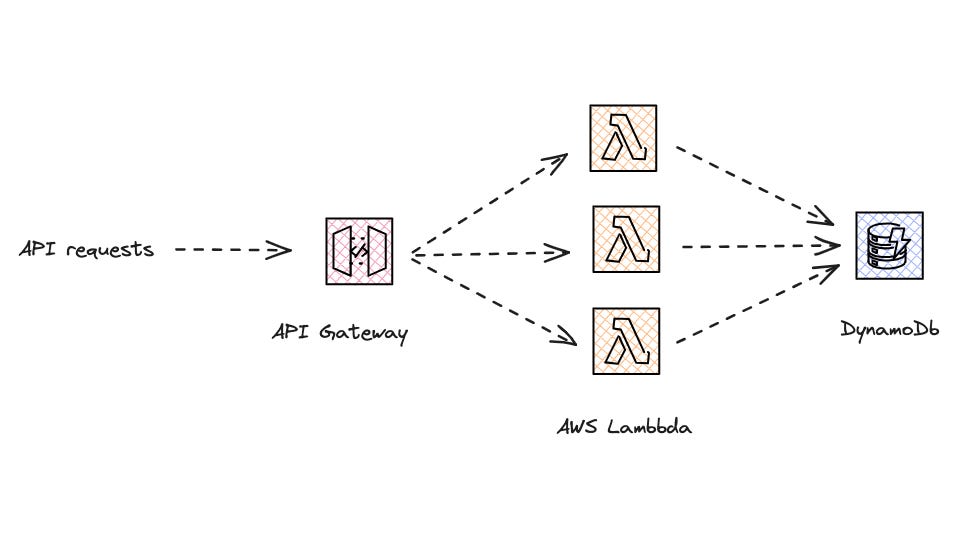AWS Lambda 101: Everything you need to know
And some news from around the community.
The concept of serverless computing has been around for around us for a decade now. Ever since AWS introduced AWS Lambda back in 2014, it’s been growing rapidly from database to compute, we see a lot of serverless offerings today.
In this episode of The Cloud HandBook, we will discuss some of AWS Lambda basics.
What is Serverless?
It is an application development and execution model in which developers do not have to think about underlying infrastructure.
It is managed by provider.
One thing people have misconceptions about is that serverless = AWS Lambda. But, it’s more than Lambda.
What is AWS Lambda?
AWS Lambda is one of the most popular serverless computing platforms from AWS. It enables developers to write applications without thinking about any servers.
With Lambda, you simply upload your code, and AWS handles the rest - from scaling to execution.
Key Features
Serverless Architecture: No more server management and ssh-ing. AWS Lambda dynamically manages compute resources, ensuring your code runs efficiently without the overhead of infrastructure management.
Event-Driven Execution: Lambda can response to predefined triggers or events. Whether it's an HTTP request, database modification, or file upload, Lambda can respond to all the events and process it accordingly.
Pay-per-Use Pricing: AWS Lambda follows a consumption-based pricing model. You're billed solely for the compute time your code consumes.
Auto-Scaling: Lambda's auto-scaling prowess is unparalleled. It intelligently adjusts compute resources based on workload demands, ensuring optimal performance without manual intervention.
Deep Integration: Lambda seamlessly integrates with various AWS services like S3, DynamoDB, and API Gateway, empowering developers to architect robust serverless applications effortlessly.
Use Cases
Data Processing: Harness Lambda's prowess to process data from diverse sources, be it streaming data from Kinesis or batch processing from S3.
Real-time File Processing: Automate file processing tasks by triggering Lambda functions upon file uploads to S3, enabling real-time data processing at scale.
Web Applications: Build serverless web applications with ease by coupling Lambda with AWS API Gateway to handle HTTP requests efficiently.
IoT Backends: Effortlessly manage and process data from IoT devices, leveraging Lambda to execute actions based on incoming device data.
Task Automation: Streamline mundane tasks like image resizing, data validation, and more, using Lambda's event-driven architecture.
How to Get Started
Create a Lambda Function: Write your code in your preferred programming language, whether it's Node.js, Python, Java, Go, or Ruby or even custom runtime.
Configure Triggers: Define event sources that will invoke your Lambda function, ranging from API Gateway endpoints to S3 bucket uploads. AWS Lambda integrates well with most of the AWS services.
Set up Execution Role: Grant necessary permissions to your Lambda function by assigning an IAM role, facilitating seamless interaction with other AWS resources.
Test and Deploy: Rigorously test your Lambda function and seamlessly deploy it into production environments.
To get started with, you can use open-source framework like AWS SAM or Serverless Framework.
Here is a step by step guide to get started using SAM.
5 Steps to Deploy AWS Lambda Using AWS SAM CLI5 Steps to Deploy AWS Lambda Using AWS SAM CLI
Pricing
AWS Lambda's pricing model revolves around two main pillars: the number of requests and the duration of code execution, measured in milliseconds. Additionally, AWS offers a generous free tier, allowing developers to explore Lambda's capabilities without incurring costs.
To learn more about Lambda pricing you can visit here:
Some Best Practices
Modularize Functions: Keep Lambda functions small and focused on specific tasks, promoting reusability and maintainability.
Configuration Management: Use environment variables for flexible configuration management, ensuring seamless adaptability across environments.
Monitor and Optimize: Implement robust monitoring and logging mechanisms to gain insights into Lambda function performance, facilitating continuous optimization and debugging.
Conclusion
By embracing Lambda's simplicity and scalability, developers can unlock unprecedented agility and efficiency in application development. As you delve deeper into the Lambda ecosystem, explore advanced concepts like Lambda layers, versions, aliases, and serverless application frameworks, enriching your journey towards cloud-native excellence.
News in Cloud
You can now generate CF templates and CDK apps for your existing AWS resources. Generate AWS CloudFormation templates and AWS CDK apps for existing AWS resources in minutesCloud Jobs
AWS announces new AWS service: AWS Deadline Cloud. Learn more here. It is a 2D/3D rederning service.
Cloudflare Powers One-Click-Simple Global Deployment for AI Applications with Hugging Face. Read more here»



Excellent work
Brilliantly written!